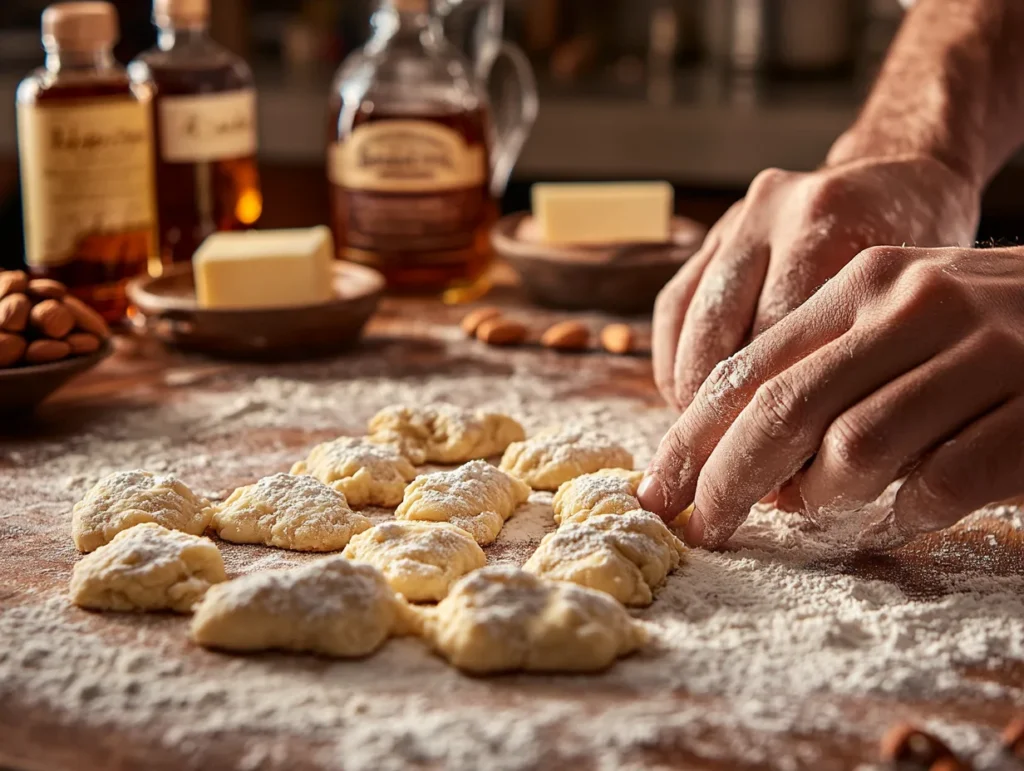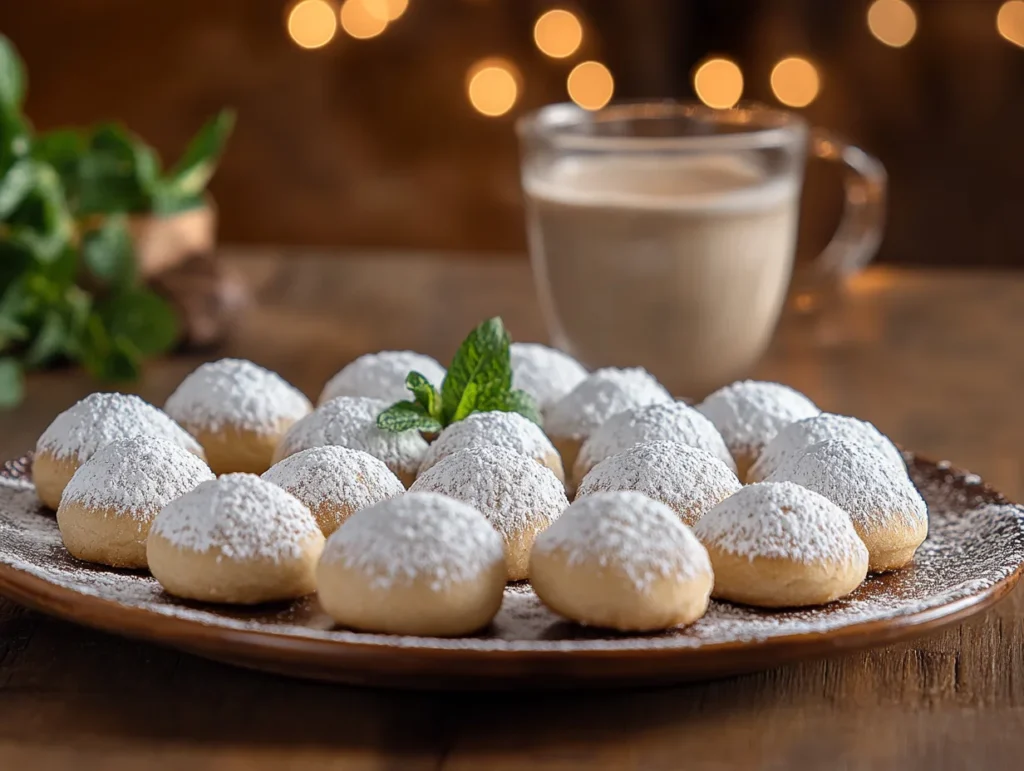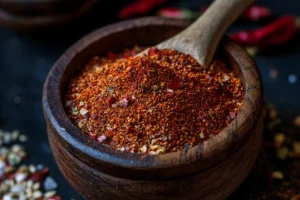Introduction
Few treats can match the delicate charm and rich tradition of Greek Butter Cookies—known as Kourabiedes in Greece. These melt-in-your-mouth delights are more than just a sweet indulgence; they’re a symbol of hospitality, celebration, and cultural pride. With their buttery texture, dusted sugar coating, and subtle hints of almond and brandy, these cookies have secured their place in Greek homes during holidays and special occasions.
In this guide, we’ll uncover everything about Greek Butter Cookies, from their history and cultural importance to the secrets behind creating the perfect batch. Whether you’re a seasoned baker or trying these cookies for the first time, this comprehensive article will provide valuable insights, step-by-step instructions, and fascinating tidbits about this timeless treat.
Let’s begin with an introduction to these beloved cookies, exploring their essence, origins, and role in Greek celebrations.
Introduction to Greek Butter Cookies
What Are Greek Butter Cookies (Kourabiedes)?
At their core, Greek Butter Cookies—or Kourabiedes—are a type of shortbread cookie, characterized by their rich, buttery flavor and powdered sugar coating. These cookies are often shaped into rounds or crescents, and sometimes adorned with whole almonds or infused with orange blossom water for a fragrant finish.
The magic of Kourabiedes lies in their simplicity. The key ingredients—butter, flour, powdered sugar, and almonds—come together to create a treat that feels luxurious despite its humble components. The dough is gently mixed, shaped by hand, baked until golden, and then generously coated in powdered sugar, creating a snowy, festive appearance.
Traditionally served during Christmas, Easter, and weddings, these cookies hold a special place in Greek culinary traditions and are often enjoyed alongside a cup of Greek coffee or tea.
A Brief History of Greek Butter Cookies
The origins of Kourabiedes can be traced back to the Middle East, where early forms of butter cookies were introduced to Greece through centuries of cultural exchange. The word “Kourabiedes” is believed to stem from the Turkish word “kurabiye”, which refers to a type of cookie. Over time, the Greeks added their own flair, incorporating locally sourced ingredients like almonds, goat or sheep butter, and fragrant blossom waters.
These cookies quickly became a staple in Greek holiday desserts and a symbol of celebration. Historically, they were reserved for festive occasions and were often seen as a sign of prosperity and abundance.
During Ottoman rule and into modern Greece, Kourabiedes evolved but retained their essence: buttery, crumbly, and joyfully sweet. Today, they are a cherished tradition passed down through generations.
Cultural Significance and Festive Importance
In Greece, Kourabiedes are not just cookies—they’re an expression of love, tradition, and hospitality. These delightful treats are synonymous with celebrations, appearing on tables during Christmas, New Year’s Eve, Easter, and weddings.
During Christmas, it’s common to see trays overflowing with Kourabiedes alongside Melomakarona (Greek honey cookies). The powdered sugar represents purity, while the crescent shapes symbolize the moon, an ancient sign of good fortune.
At weddings, Kourabiedes are often gifted to guests as a token of appreciation and as a sweet blessing for the newlyweds. In many Greek homes, these cookies are also offered to visitors, symbolizing warmth, welcome, and shared joy.
Beyond their festive importance, Greek Butter Cookies have become a global ambassador of Greek culinary heritage. Food enthusiasts worldwide now recognize and cherish their unique taste and texture.
Got it! Now, I’ll write Part 2: Ingredients and Their Importance and Part 3: How to Make Greek Butter Cookies – Step-by-Step Guide, integrating relevant internal links where applicable.
Ingredients and Their Importance
Key Ingredients in Traditional Greek Butter Cookies
The secret to the irresistible texture and flavor of Greek Butter Cookies lies in their simple yet high-quality ingredients. Each component plays a vital role in achieving the perfect balance of richness and tenderness.
- Butter: The soul of these cookies. Traditionally, high-quality goat or sheep butter is preferred for its unique aroma and creaminess. However, unsalted cow butter also works wonders.
- Confectioner’s Sugar: It provides a delicate sweetness and contributes to the melt-in-your-mouth texture.
- Egg Yolk: This helps bind the ingredients together while adding a subtle richness to the dough.
- Almonds: Lightly roasted almonds give a delightful crunch and nutty flavor.
- Orange Blossom Water: Though optional, it adds a floral note that enhances the cookies’ aromatic profile.
- Brandy: A splash of brandy, often Metaxa, adds depth and complexity to the flavor.
Each ingredient must be measured and handled with care to ensure the cookies turn out perfectly crumbly and flavorful.
For more baking inspiration, check out this Biscochitos Traditional Cookies Recipe.
The Role of Butter in Kourabiedes
Butter isn’t just an ingredient—it’s the heart of Greek Butter Cookies. Its quality determines the flavor, aroma, and texture of the final product. In traditional recipes, Greek households often use sheep or goat butter, which adds a rich, slightly tangy note.
To achieve the signature lightness, the butter must be beaten for at least 15 minutes until it’s pale, fluffy, and filled with air pockets. This step ensures the cookies remain tender and crumbly after baking.
Remember, room-temperature butter is essential for seamless mixing and maximum flavor infusion.
Optional Ingredients: Brandy, Orange Blossom Water, and Mastiha
While the core ingredients create an excellent cookie, it’s the optional additions that set each family recipe apart.
- Brandy: Adds warmth and a subtle alcoholic undertone.
- Orange Blossom Water: Introduces a delicate floral fragrance.
- Mastiha (Mastic Resin): Known for its unique pine-like aroma, this rare ingredient elevates the cookies’ authenticity.
These extras can turn a simple batch of cookies into a gourmet treat, perfect for festive occasions.
For other delightful recipes with aromatic flair, explore this Homemade Garlic Hummus Without Tahini.
How to Make Greek Butter Cookies – Step-by-Step Guide

Preparing the Dough
The first step in making Greek Butter Cookies is preparing the dough. Follow these key steps:
- Cream the Butter and Sugar: Beat high-quality butter with powdered sugar for about 15–20 minutes until light and fluffy.
- Add Wet Ingredients: Mix in egg yolk, brandy, and vanilla extract until fully combined.
- Incorporate Almonds: Add roasted almonds for a nutty crunch.
- Sift Dry Ingredients: Gradually fold in sifted all-purpose flour and baking powder to avoid overmixing.
The dough should be soft yet not sticky, holding its shape when rolled.
Shaping the Cookies: Traditional vs. Modern Styles
Traditionally, Kourabiedes are shaped into crescents or small round balls. However, modern bakers often experiment with shapes like stars, hearts, or even custom molds.
- Traditional Shapes: Crescent moons or small rounds.
- Modern Shapes: Hearts or stars for festive flair.
Each shape not only looks beautiful but also impacts the baking time slightly. Round cookies bake evenly, while crescents may need a little extra care.
For shaping inspiration, take a look at these Nutty Fingers Recipe.
Baking Techniques for Perfect Texture
Baking is where the magic happens. Here’s how to achieve perfect results:
- Preheat the Oven: Always bake at around 350°F (175°C) for even results.
- Monitor Baking Time: Bake until the edges are lightly golden. Overbaking can dry out the cookies.
- Coat with Powdered Sugar: While still warm, spray the cookies lightly with orange blossom water and coat them in a generous layer of powdered sugar.
Proper baking ensures each bite melts in your mouth, delivering that classic Greek Butter Cookie experience.
Dusting and Presentation Tips
The final touch is the iconic powdered sugar coating. To achieve a picture-perfect presentation:
- Dust While Warm: This helps the sugar stick better.
- Use a Sieve: Sprinkle powdered sugar evenly over the cookies.
- Layer for Storage: Place parchment paper between layers to prevent sticking.
Serve your cookies on an elegant platter for maximum visual appeal.
If you’re inspired to try another classic dessert, check out this Mini Chicken Pot Pies Recipe.
Variations of Greek Butter Cookies
Classic Kourabiedes with Almonds
The classic version of Greek Butter Cookies—or Kourabiedes—features roasted almonds as the star ingredient. These nuts add a satisfying crunch and nutty aroma that perfectly complements the buttery dough. Almonds can be chopped, slivered, or even used whole, depending on regional traditions and personal preferences.
For an authentic experience, lightly roast the almonds before adding them to the dough. This enhances their flavor and gives the cookies a subtle smokiness. Some bakers even use almond flour for a finer texture, but it’s the whole or slivered almonds that define the traditional recipe.
If you’re a fan of almond-based desserts, you might enjoy exploring Biscochitos Traditional Cookies, another classic delight featuring rich, warm flavors.
Chocolate-Coated Kourabiedes
For those with a sweet tooth, chocolate-coated Greek Butter Cookies offer an irresistible twist. After baking and cooling, the cookies are dipped halfway into melted dark or milk chocolate, creating a stunning visual contrast against the powdered sugar coating.
To add more character, sprinkle the chocolate coating with chopped almonds, sea salt, or even a hint of cinnamon. These chocolate-dipped cookies are perfect for festive platters or gifting during the holiday season.
This variation combines traditional Greek flavors with an indulgent chocolatey finish, appealing to both purists and adventurous bakers.
Regional Variations Across Greece
Greece’s diverse regions bring unique twists to Kourabiedes. Each area boasts subtle differences based on local ingredients and traditions:
- Northern Greece: Often incorporates Mastiha (mastic resin) for its aromatic, pine-like flavor.
- Central Greece: Uses more brandy or even ouzo for an anise-flavored undertone.
- Islands: You might find versions infused with citrus zest or even drizzled with honey.
These regional differences add depth to the already versatile Greek Butter Cookies. Whether you’re in the rugged mountains or by the sparkling Aegean Sea, each version tells a local story through its ingredients.
For more traditional baking inspiration, take a look at Nutty Fingers Recipe.
Tips for Storing and Preserving Greek Butter Cookies
Short-Term Storage Tips
Storing Greek Butter Cookies properly ensures they remain fresh, crumbly, and flavorful for as long as possible. If you plan to enjoy them within a week or two, follow these tips:
- Airtight Container: Store the cookies in an airtight container to prevent moisture from softening their delicate texture.
- Layer with Parchment Paper: Place parchment paper between each layer of cookies to prevent them from sticking together.
- Cool, Dry Place: Keep the container in a cool, dry spot, away from direct sunlight or heat sources.
These steps will keep your Greek Butter Cookies fresh and ready to enjoy with every bite.
Freezing Dough vs. Freezing Baked Cookies
Freezing is an excellent option if you want to enjoy Greek Butter Cookies weeks or even months later. Here’s how:
- Freezing Dough: Roll the dough into shapes, place them on a baking sheet, and freeze them until firm. Once frozen, transfer them to a ziplock bag or airtight container. Bake directly from frozen, adding a few extra minutes to the baking time.
- Freezing Baked Cookies: Allow baked cookies to cool completely before freezing. Place them in a single layer in an airtight container, using parchment paper between layers. Thaw at room temperature and re-dust with powdered sugar if needed.
By using these methods, you can have Greek Butter Cookies on hand for unexpected guests or last-minute celebrations.
Avoiding Common Storage Mistakes
Improper storage can lead to stale or soggy cookies. Here are some common pitfalls to avoid:
- Don’t Refrigerate: Refrigeration introduces moisture, which can ruin the cookies’ crumbly texture.
- Avoid Overcrowding: Overfilling containers can cause cookies to break or lose their delicate shape.
- Store Separately from Other Desserts: These cookies easily absorb flavors from other baked goods.
With these tips, your Greek Butter Cookies will stay perfect for weeks.
Healthier and Gluten-Free Alternatives
Gluten-Free Adaptations for Greek Butter Cookies
For those who are gluten-sensitive or have dietary restrictions, you can still enjoy the delicious taste of Greek Butter Cookies. Here’s how to create a gluten-free version:
- Flour Substitute: Replace all-purpose flour with a 1:1 gluten-free baking flour blend. Ensure it contains xanthan gum for proper binding.
- Monitor Dough Texture: Gluten-free flours may absorb moisture differently. Adjust the dough consistency with a little extra butter or a splash of milk if it feels too dry.
- Bake Carefully: Gluten-free cookies are more fragile, so avoid overbaking them.
The result will be a batch of buttery, melt-in-your-mouth Greek Butter Cookies that everyone can enjoy, regardless of dietary restrictions.
Healthier Ingredient Substitutions
If you’re looking to make a healthier version of Greek Butter Cookies, consider these ingredient swaps:
- Butter Substitute: Use plant-based butter for a dairy-free version or reduce the amount of butter and add Greek yogurt.
- Sugar Substitute: Opt for a natural sweetener like powdered stevia or monk fruit sweetener instead of confectioners’ sugar.
- Almond Flour: Replace part of the all-purpose flour with almond flour for added protein and a nutty flavor.
These changes can make the cookies slightly lighter without compromising their signature taste and texture.
Balancing Tradition with Dietary Needs
While traditional Greek Butter Cookies hold a special place in Greek culture, modern adaptations ensure that everyone, regardless of dietary preferences, can enjoy them. Whether gluten-free, low-sugar, or dairy-free, these cookies remain a timeless treat.
If you’re exploring other traditional recipes with healthier twists, you might enjoy checking out other creative recipes on popular food blogs.
Greek Butter Cookies in Popular Culture
Kourabiedes in Greek Festivals and Celebrations
In Greece, Greek Butter Cookies—or Kourabiedes—aren’t just desserts; they are symbols of celebration and tradition. From Christmas to weddings, these cookies are an essential part of Greek gatherings.
- Christmas Traditions: During the holiday season, trays of Kourabiedes are displayed proudly in homes, dusted generously with powdered sugar.
- Weddings: These cookies symbolize purity and joy, often served alongside other traditional sweets.
- Name Days: They’re also gifted during Greek name day celebrations, which are equally significant as birthdays.
Each bite of Greek Butter Cookies carries the warmth of family gatherings and festive cheer.
Modern Popularity and Social Media Influence
In today’s digital age, Greek Butter Cookies have found new fame beyond Greece. Food bloggers, home bakers, and social media influencers have brought these traditional treats to a global audience.
- Instagram-Worthy Desserts: With their snowy-white coating, Kourabiedes are visually stunning and frequently featured in holiday-themed posts.
- Food Blogs: Recipes for Greek Butter Cookies are now shared across international food platforms, with modern twists like chocolate dips and gluten-free adaptations.
- Cooking Shows: Many culinary TV shows spotlight these cookies during holiday baking specials.
This global exposure has transformed Greek Butter Cookies from a local tradition into a beloved international treat.



